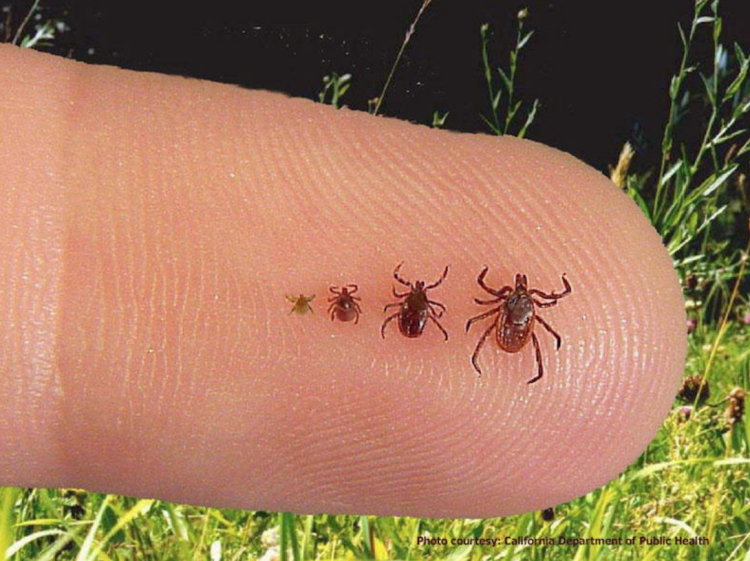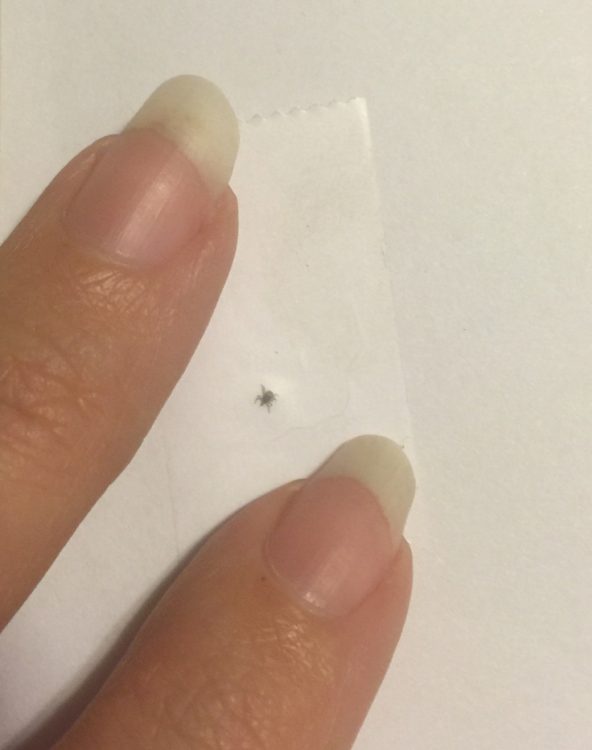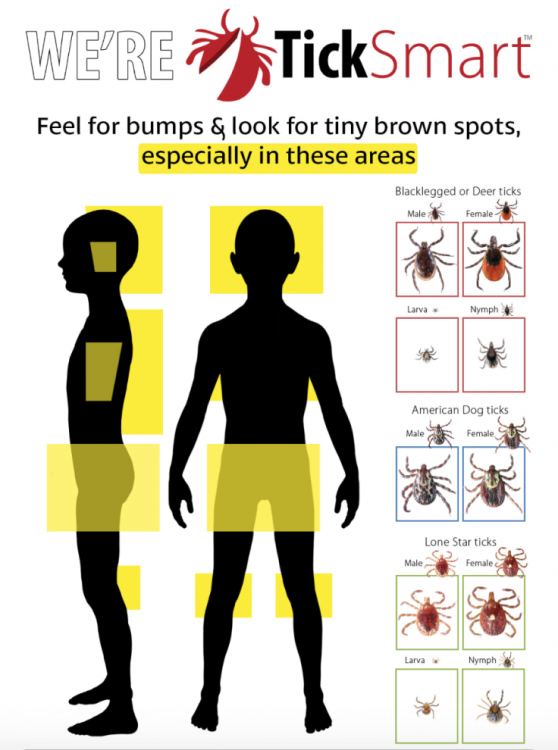How to Prevent Tick Bites and Infection
I hope by now you’ve read and reread all the traditional suggestions for prevention of and treatment for tick bites. As I am continually bombarded with messages from moms seeking advice, generally for tick bites on their children, I often feel helpless to this epidemic.
It’s like I can see a horrific car accident about to happen, and I’m screaming and screaming, trying to stop it, but my screams are silent. No one can hear me. I’m waving my arms, tears streaming down my face, but the wreck continues to happen, and I’m left trying to save the victims.
Maybe this sounds melodramatic, but it is truly my daily world. With every frantic message, my heart aches. I fear for every child, and I cannot imagine any little one going through the hell of chronic Lyme disease that I have.
So today, I’m thinking out of the box. You know the traditional steps to take to prevent a tick bite, including ways to safeguard your yard, and, I hope, you know what to do if you or a loved one is bitten. Let’s chat about a few more ways you can protect your children, in particular, from this terrifying epidemic.
Lyme disease is typically carried by deer ticks, which can be easily differentiated from other ticks by their characteristic black legs. Deer aren’t the only animals providing transportation for these ticks though. Mice are actually a much bigger factor as they and other mammals serve as reservoirs for the bacteria. Ticks are most likely to transmit Lyme disease to humans when they are tiny nymphs, or basically juvenile ticks.
Now comes the truly overwhelming part. At this stage, these ticks are only slightly bigger than the period at the end of this sentence. If that doesn’t make you feel like this is a hopeless situation, I don’t know what will. This is a photo of a deer tick my daughter just happened to notice on her arm last summer.
Not only are we at war with something the size of our freckles, but other tick species transmit diseases as well, including tick paralysis and Rocky Mountain spotted fever. Both have been diagnosed and treated by individuals living right here in Lewis County, West Virginia. So no matter where you live, taking every step possible to prevent ticks from finding you and your children is essential.
Know Your Moles
We cuddle and kiss our children every day, but do you know your child’s every mole? Pay attention to your child’s freckles and moles, especially those on his or her head. Ticks love to hide in the scalp, and it can be downright challenging at times to tell the difference between a mole and a tick, particularly if your child has dark hair. So know the locations of moles on the scalp. It’ll save you time when doing daily tick checks.
Give Your Clothes a Spin
Ticks do not hang out in only tall grass and wooded areas. The tick in the photo above hopped onto my daughter on her walk from the vehicle to the house. Her shoes never even touched the grass. Happy to arrive home from a day of school, she walked from the gravel driveway onto the sidewalk and then the porch. To kill ticks that may be hiding on clothing, toss the clothing your child has worn outside into your dryer for 10 minutes.
Shower Every Day
When your child plays outside, always insist he or she take a soapy shower or bath. This will likely remove any ticks that have not yet attached. Remind your child to wash body creases, such as armpits and groin, and to shampoo hair. Teach your child what ticks look like and how to do a thorough tick check.
Tick Checks
Ticks checks are mandatory! There is mixed research on the amount of time ticks must feed in order to transmit Lyme disease; some argue 36 hours but many Lymies argue infection can happen as soon as the tick attaches. Tick paralysis is caused by over 40 species of ticks worldwide and symptoms begin within hours. “In some cases, profound paralysis, beginning in the lower extremities, can develop and become fatal even before anyone becomes aware of the tick’s presence. Regularly checking your child for ticks after spending time outside is a hugely effective preventive measure.
Look for tiny and foreign dark dots, especially in moist body creases in the armpits, groin, hairline, scalp, waistband and the backs of your knees. Because of their tiny size, it is entirely possible to carry a deer tick in the lymph stage on the body long enough for it to feed and then drop off without you ever knowing your child was bitten, so be sure to check often and carefully.” It’s easiest to check your child’s head immediately following a bath or shower. Comb the hair, then methodically check piece by piece for ticks. In our home, this usually happens before bed, which prevents a tick from having an overnight dinner on my daughter.
Monitor Your Pets
Ticks can hitch a ride on your family pet, and if Fido is an inside pet, he can bring these blood-suckers to you. “There are many veterinary-approved treatments available to kill ticks. Oral drug treatment options are often administered as a tasty treat or tablet, but these products require pests to attach and feed on your dog for up to 48 hours to actually work. The pests need to absorb enough of the insecticide from the dog’s bloodstream. If you are concerned about tick-borne diseases and reducing tick biting on the outset, you may want to consider other options.
Non-systemic treatments are applied directly to the skin as a proactive measure. The active ingredients spread on your dog’s skin and lock into the natural oils of the skin and your pet’s fur. These products work through contact to create a ‘hot-foot effect.’ This means that when the tick latches onto your animal’s coat it becomes uncoordinated, leaves the pet and dies without them needing to bite, so the chance of disease transmission is far less.”
We use the Seresto collars for our dogs and cats. With its innovative delivery system, Seresto offers a breakthrough in flea and tick protection for dogs for eight months! It kills and repels fleas before they lay eggs, kills and repels ticks, provides odorless, non-greasy and easy-to-use protection and is water resistant. The product will feel pricey initially, but when you divide the cost by eight months, it’s significantly cheaper than all other flea and tick options for pets. All three of our Labradors have also received the Lyme vaccination and booster.
Track Attacks
If you do find an attached tick, remove it carefully with tweezers, wipe the bite with alcohol swab and circle it with a permanent marker. Save the tick. Attach it to a piece of paper and note the location of the bite and the date it was found. Check the bite location every few days for a rash or other unusual inflammation. Promptly seek medical attention if you see or experience any symptoms of Lyme disease.
Spray Before You Play
There are three main types of tick repellent:
1. Chemical-based repellants containing DEET, such as OFF, are sprayed on the body. Research DEET to determine if the risks outweigh the advantages for your family.
2. Permethrin-based sprays are sprayed on clothing to repel ticks.
3. Essential oil-based sprays are sprayed on the body, such as the blend I make called Attack-a-Tick. Lemon eucalyptus is the main ingredient in effective blends. These are very safe, but must be applied more frequently than sprays containing DEET.
Place a tick repellent spray by each exit in your home and in your vehicle. Remind your kids to spray before you play until it becomes it becomes a motto and habit in your home.
Be Aggressive
Remember, the bulls-eye rash only appears in approximately 60 percent of cases. Watch for flu-like symptoms – headache, low fever, muscle aches, fatigue and joint pain. Younger children may have difficulty explaining muscle aches. A good way to tell if your little one is experiencing this is if he or she doesn’t want to cuddle. If your body hurts, you usually don’t want touched. He or she may seem cranky and withdrawn. Your child does not have to have all of these symptoms to have Lyme; in fact, he or she could just have one or two. The disease can be curable if treated in its early stages, but if you wait too long, your child could be in for a long, difficult and sometimes unattainable recovery.
Testing for Lyme disease is alarmingly inaccurate, dependent upon a specific window for efficiency. When seeking treatment, you must be your child’s advocate. The medical community is only beginning to understand that Lyme disease most often is clinically diagnosed and a rash is not required to make that diagnosis. If your doctor automatically discredits your worry, claiming “we don’t live in an endemic area” or “we don’t have Lyme here,” find a doctor who will listen and is up-to-date on the CDC’s latest warnings and recommendations. Treatment should include a minimum of 21 days of the antibiotics Doxycycline for adults and Amoxicillin for children twice a day. If symptoms still exist after a round of antibiotics, then a second round of antibiotics should be prescribed and a referral to an infectious disease specialist should be made. If Lyme disease is not treated promptly, the bacteria will move into the muscles, nerves, joints and brain. Late-stage Lyme disease is debilitating, causing severe arthritis, mental confusion, numbness of the arms and legs, heart problems and many more life-changing symptoms.
Until there is a cure for Lyme disease, our best defense is our offense. Awareness is critical. To safeguard the quality of your child’s life, it is essential you are proactive in Lyme prevention.
I will continue to scream this until we live in a world where better testing and effective treatment exist.
Be aware. Be vigilant. Be aggressive.
And keep coloring.
This post originally appeared on A Broken Crayon.
We want to hear your story. Become a Mighty contributor here.





